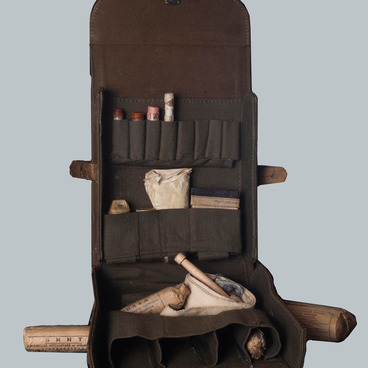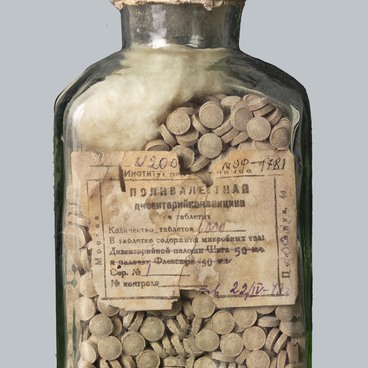Between 1941 and 1943, Alexandra Rastorguyeva, captain of medical services, lived in besieged Leningrad. For her contribution to the defense of the Soviet Union, she was awarded two Orders of the Red Star, the medal “For the Defense of Leningrad”, and the Order of the Patriotic War, First Class.
An important result of Rastorguyeva’s scientific research was “The Book of Most Common Vitamin Deficiencies and Types of Dystrophy”. The doctor conducted observations for this book while helping the sick and wounded during the siege of Leningrad.
By the middle of September 1941, the ring around Leningrad tightened. The siege inevitably led to a decrease in the daily ration of Leningrad citizens — a process that began as early as October 1. A week later the ration was cut to its lowest level.
In November 1941, doctors diagnosed the first cases of alimentary dystrophy or marasmus. This disease was caused by insufficient caloric intake. Another reason was the inadequate intake of micronutrients: proteins, fats, and carbohydrates.
Moreover, vitamins and minerals were lacking in the ration. People suffered from the effects of a prolonged diet of similar foods, which were occasionally available at military and civilian warehouses. Alexandra Rastorguyeva reflected the changes in their appearance in her sketches for the book.
The standards remained low for three and a half months, until January 20, 1942. During this period, power stations and municipal infrastructure were put out of operation by artillery strikes and air raids, thus depriving the wounded and sick servicemen and civilians of light and heating. Disruption of water supply and sewerage service led to outbreaks of intestinal infectious diseases.
After the end of the war, the living conditions in Leningrad improved significantly. Still, doctors continued to observe various effects of alimentary dystrophy and avitaminosis among the population groups who had suffered severely during the siege of the city.
An important result of Rastorguyeva’s scientific research was “The Book of Most Common Vitamin Deficiencies and Types of Dystrophy”. The doctor conducted observations for this book while helping the sick and wounded during the siege of Leningrad.
By the middle of September 1941, the ring around Leningrad tightened. The siege inevitably led to a decrease in the daily ration of Leningrad citizens — a process that began as early as October 1. A week later the ration was cut to its lowest level.
In November 1941, doctors diagnosed the first cases of alimentary dystrophy or marasmus. This disease was caused by insufficient caloric intake. Another reason was the inadequate intake of micronutrients: proteins, fats, and carbohydrates.
Moreover, vitamins and minerals were lacking in the ration. People suffered from the effects of a prolonged diet of similar foods, which were occasionally available at military and civilian warehouses. Alexandra Rastorguyeva reflected the changes in their appearance in her sketches for the book.
The standards remained low for three and a half months, until January 20, 1942. During this period, power stations and municipal infrastructure were put out of operation by artillery strikes and air raids, thus depriving the wounded and sick servicemen and civilians of light and heating. Disruption of water supply and sewerage service led to outbreaks of intestinal infectious diseases.
After the end of the war, the living conditions in Leningrad improved significantly. Still, doctors continued to observe various effects of alimentary dystrophy and avitaminosis among the population groups who had suffered severely during the siege of the city.


